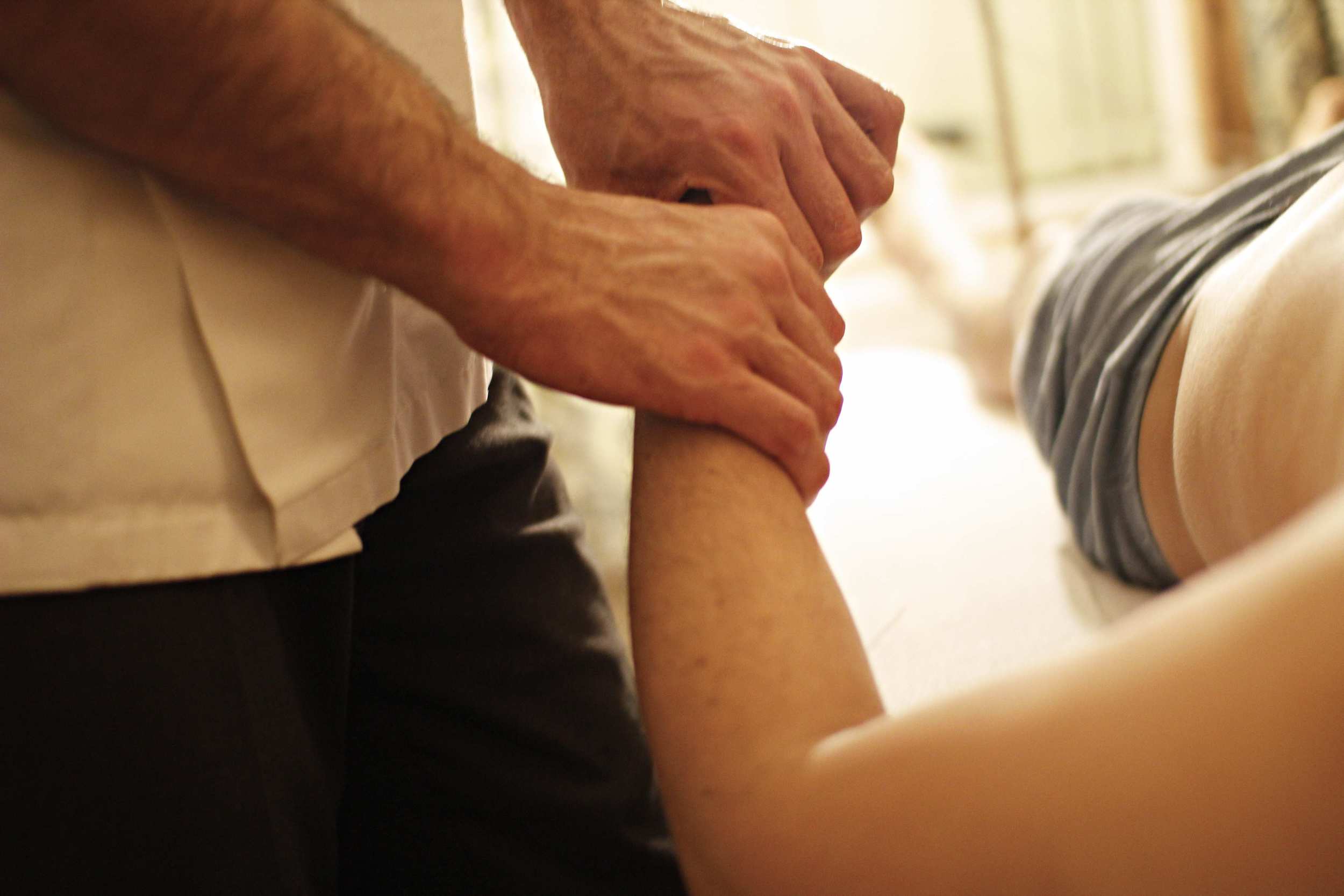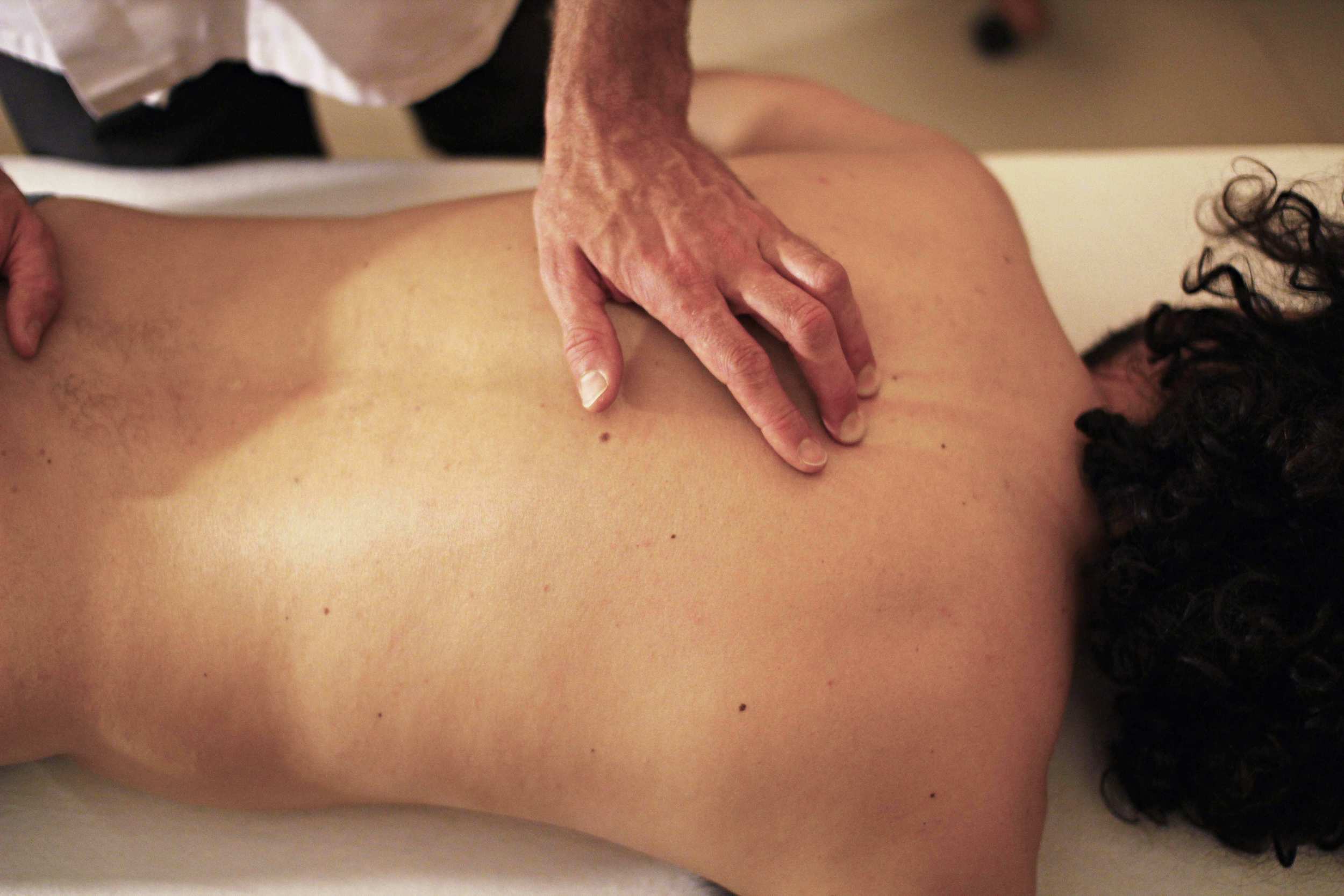What is Osteopathy?
Osteopathy is a uses gentle manipulation and other techniques to help you heal, move and feel better.
Sessions cost £50 and last around 40 minutes.
Osteopathy is available with Ned at two clinics; Woodbridge and East Bergholt
Flexible clothing or appropriate underwear is required for treatment.
Sessions involve; case history interview, examination of posture and movements, manipulation such as articulation, massage, acupuncture and thrusts which may produce audible sounds, such as clicks.
Patient Consent is required for treatment, and the osteopath will advise and only proceed depending upon the patient's wishes.
How does Osteopathy work?
Osteopathy is based on the principle that the wellbeing of an individual depends upon an integrated relationship and coordination of bodily systems, involving musculoskeletal, circulatory and neurological components.
The osteopathic approach aims to treat the cause rather than the symptoms. Structural relationships within the body play an important role in regards to its function. The osteopath adjusts the framework of the body to improve the ability of the body to heal itself. There are many ways to do this and many styles of osteopathy, like Classical Osteopathy or Cranial Osteopathy. Often the manipulation will involve using gentle pressure to work a bone and its associated ligaments and muscles into a correct position, sensitively integrating it back into the whole system.
For example; imagine the right arm is twisted at the shoulder, common with postural and work-related strains. The blood supply to and from that arm will be impeded, the nerves in that area will be irritated and sensitized, the muscles and ligaments will be imbalanced; some shortened and others stretched. Other areas of the body will have to compensate for the movement imbalance, causing stress to tissues. These compensating areas may become symptomatic later, and yet not be the original strain. Despite all this, you may simply feel a pain in your arm and be unaware it is even twisted, why it hurts, and what caused it. Once the arm sits evenly on the shoulder its mechanical function is restored.
In some cases the osteopath is aiming to reduce pain in an area, and may use gentle massage, or pressure to relax and area and calm down the reactivity of the irritated nerves, on other occasions the osteopath may be attempting to correct one of the primary areas of dysfunction. This may cause reactions, such as increased pain in another area, due to overall change in mechanical arrangement of the body. The osteopath should always be thinking to improve the body with minimal side-effects and for the long term, and allow the patient to reclaim confidence and health.
Acupuncture is sometime used by osteopaths, and is very effective, having profound effects on myofascial (muscle and connective tissue) contraction and pain.
What conditions does Osteopathy treat?
Osteopathy is used to treat or help palliate a wide range of conditions, back pain is only one.
Sports Injury
Arthritis / Osteoarthritis
Low back pain; general, acute, and chronic
Digestive problems
Frozen shoulder
Migraine prevention
Neuralgia
Circulatory problems
Headaches
Slipped disc
Postural problems / Scoliosis
Joint pain and dysfunction; hip, knee, ankle, shoulder, elbow, wrist, pelvis
Postural problems with pregnancy
Post-operative rehabilitation
Repetitive strain (RSI)
Nerve entrapment / Sciatica
Muscular spasm, tension and pain
Shin splints
Sleeping problems and restlessness
Tension/ Inability to relax
Fibromyalgia
Visit asa website for info regarding scope of practice.
Osteopathy treats patients not conditions. The aim is to improve the mechanical function of the body. Treatment protocols differ for two people with the same condition. Osteopaths refer patients to GP's for Ultrasounds, X-rays ands MRI's when the presence of pathology or serious injury is suspected.
The scope of medical conditions that can be successfully treated by Osteopathy is controversial. There is a distinct lack of evidence for many of Osteopathy's claims. Traditionally, Classical Osteopathy has been used to treat most types of illness and disease. If the patient is unable to be cured, treatment was intended to reduce symptoms and create comfort in the body. Used with Naturopathy it is used to detoxify the body and support the healing process.
Feel free to discuss your condition with us prior to booking a treatment. 01394 386866 All patient information is regarded as confidential.
What Evidence is there that Osteopathy Works?
There is good evidence that Osteopathy is effective for the treatment of low back pain and osteoarthritis. The National Institute for Clinical Evidence (NICE) recommends manual therapy for these conditions.
There is no statistical evidence it can treat conditions such as asthma, colic, IBS, painful periods. However, there is plenty of clinical and anecdotal evidence suggesting it is highly effective.
Is Osteopathy Safe?
All treatment procedures carry some degree of risk/benefit. The Osteopathic profession is regulated by the General Osteopathic Council (GOsC). Visit their website for more information regarding regulation and safety.


